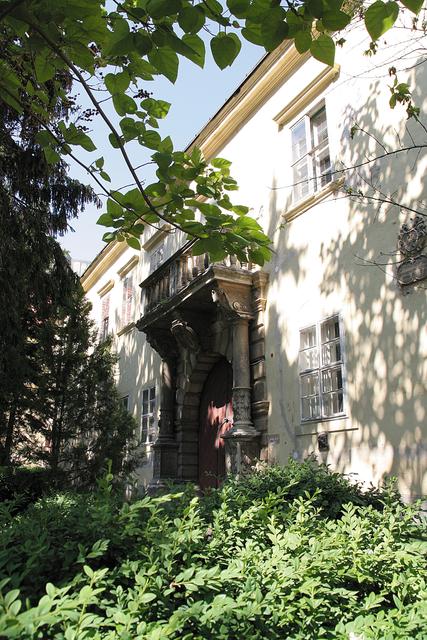Archbishop Palace
The Renaissance-era Archbishop Palace became the new and first ceremonial seat of the Esztergom archbishops built in asylum within the area of the present-day Slovakia. Its authentically preserved rooms with renaissance arches and portals represent the only compact example of an almost extinct renaissance era architecture in Trnava. The late gothic chapel, as well as the stone coats-of-arms belonging to the archbishops M. Oláh, J. Selepčéni and F. Forgáč, or the spacious cellar, originally divided into several floors similar to the cellars at Červený Kameň, are of no lesser value. After the arrival of the Esztergom canonry in Trnava, Mikuláš Oláh had a suitable archbishop residence built in 1562. The palace construction required the takeover of two gothic houses, with one of them being the house of the John the Baptist’s Altar Association, a group looking after the maintenance and funding of the John the Baptist’s altar at the parish church. Oláh’s descendent, the archbishop František Forgáč, enriched the palace with a late Renaissance main portal and ceremonial staircase. It was his initiative originally to construct a separately standing archive building located opposite the side entrance of the parish church. As this building was built on a town land plot, the municipality conditioned its construction in limiting the canonry’s right to use the building only for the temporary period of the canonry’s presence in town. After the canonry’s departure, the building was supposed to be returned to the municipality. However, the archbishop had the archive connected to the palace. This initiated a several-year long conflict, which in the end was settled by the king in favour of the canonry. Half a century later, a separately standing house of Slovak preachers located near the city walls was connected to the palace. A preserved list of rooms from 1776 gives us a partial idea of the personnel present at the palace. Besides His Eminence, the archbishop, there lived a bottler, a chamberlain, a steward, a notary, a supervisor, a secretary, as well as page boys and relatives. Economic stability was sustained by the land with a farm belonging to the palace, situated on the other side of the square, on the corner of present day Haulíková Street. The archbishop’s office resided in the palace until the end of the 20th century, when it was relocated to the reconstructed Aristocratic dormitory.

Contact
Archbishop Palace
Námestie sv. Mikuláša 387/3
917 01 Trnava
GPS:
N 48.37861251831 / E 17.59222221375





